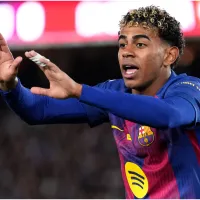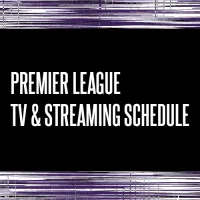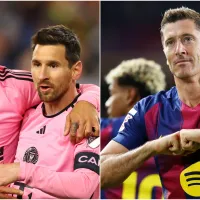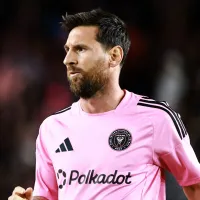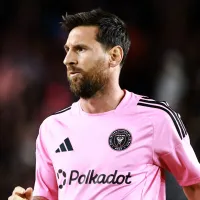The latest battleground in the “Soccer Warz” appears to be set, on the coast of southern California. Newspaper reports indicate that a San Diego MLS franchise will be announced in the coming weeks, adding the league’s 30th team as early as 2025. The new team would play at Snapdragon Stadium, home of San Diego State University and the NWSL‘s San Diego Wave.
There’s an elephant in the room, though. San Diego already has a professional men’s soccer club. In fact, it already has two. And it appears that this MLS effort has nothing to do with either of them.
This sets up more drama in the eternal competition between independent soccer leagues in the US.
The San Diego Loyal of the USL Championship (division 2) are currently in their fourth season. The Loyal’s co-owner and Executive Vice President is USMNT icon Landon Donovan. Donovan was also the club’s head coach for its first three seasons. This is the very same Landon Donovan who MLS has named their annual MVP award after.
Meanwhile Albion San Diego (formerly San Diego 1904 FC) of NISA (D3) are playing in their fifth season. Albion started as an amateur NPSL side, at the top of a robust youth setup, in 2016. They merged with 1904 and took over the professional team in late 2021.
But now the fate of both of these clubs is now up in the air as MLS looks poised to move into town.
“We aren’t going anywhere.”
In the wake of the news that San Diego MLS is imminent, the Loyal released a statement from their owner Andrew Vassiliadis, stating their intent to continue on.

The “Loyal” name was at least partly inspired by the NFL’s San Diego Chargers abandoning the city in 2017, shortly before the soccer club was founded. Now the loyalty of Loyal supporters and ownership is certainly put to the test as the new San Diego MLS franchise comes to life. Particularly for MLS legend Landon Donovan, this will be a difficult situation.
A small handful of lower division clubs have survived MLS coming to town. Even fewer have been able to thrive. The Loyal have a tough road ahead of them if they truly intend to stick it out.
Par for the course
This is just the latest instance of MLS picking off markets/clubs from the lower divisions. Since 2009, all but one of the 17 MLS expansion teams in that time has been either a lower division club moving up, or the league placing a new team in a lower division market. Only the Philadelphia Union did not displace an existing professional club in another league in some way when they were announced:
- Seattle Sounders (moved from USL-1)
- Philadelphia Union (no pro lower league club active in market when founded)
- Vancouver Whitecaps (moved from USL-1/NASL)
- Portland Timbers (moved from USL-1)
- Montréal Impact (moved from NASL)
- Orlando City (moved from USLPro)
- NYCFC (NASL New York Cosmos active in market)
- Minnesota United (moved from NASL)
- Atlanta United (team awarded in 2014, NASL Atlanta Silverbacks active in market)
- LAFC (Orange County SC active in market)
- FC Cincinnati (moved from USL Championship)
- Inter Miami (NASL Fort Lauderdale Strikers & Miami FC active when announced)
- Nashville SC (moved from USL Championship)
- Austin FC (USL Austin Bold FC active in market)
- Charlotte FC (USL Charlotte Independence active in market)
- St. Louis City (effectively replaced USL St. Louis FC)
- San Diego (USL Loyal & NISA Albion active in market)
This situation can have a destabilizing effect on the lower divisions. If a club itself moves up, the lower league loses one of its strongest organizations. When a lower division club isn’t involved in a local MLS bid, it can easily fold entirely. If it tries to co-exist with the MLS club, it finds itself in a very tough competition for fan, sponsor, and media support.
But before USL or Loyal cries foul, they’ve been guilty of the exact same behavior in the past.
Our Pick:Includes: Every regular season game, MLS Cup Playoffs, Leagues Cup, & More |
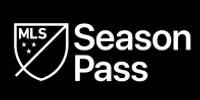 |
A system-wide issue
San Diego 1904 FC, now Albion San Diego, was announced as an NASL expansion team in 2016, planning to kick off in 2018. It even had Demba Ba and Eden Hazard as founding members of the ownership group. But when the NASL fell apart after 2017, the club had no place to play. They were unsuccessful in joining USL, so eventually began play in 2019 in NISA. Later that same year, USL announced the Loyal would be joining their league in 2020. It wasn’t the first time the league did something like this, either.
In 2018, USL announced that the Chattanooga Red Wolves would be Division 3 League One team, encroaching on the territory of successful NPSL/NISA side Chattanooga FC. The new team attempted to push CFC out of their stadium, and even poached some CFC staff and its women’s side. Around the same time, USL League One’s Lansing Ignite scuttled the Lansing United NPSL side, before folding after just one season in 2019.
And this type of league activity is also rampant in the amateur levels, with leagues nicking clubs from competing leagues every year.
The San Diego story is basically American professional soccer in a nutshell. Nobody working together, cash running the show, and the USSF nowhere to be found. Meanwhile, two clubs – and all the player, coaching, and staff opportunities they provide to the game – are now at risk.
Hopefully the Loyal, and Albion, can survive and continue to grow and prosper. And hopefully the new MLS team does well too. In an ideal world, all three could coexist in southern California, carving out their niches, and the results on the field would be all that mattered. But US Soccer is far too often not an ideal world. Sadly, the reality is it’s probably time to start making up a couple more tombstones and digging some new grave plots in the US pro soccer cemetery.
photos: Imago



